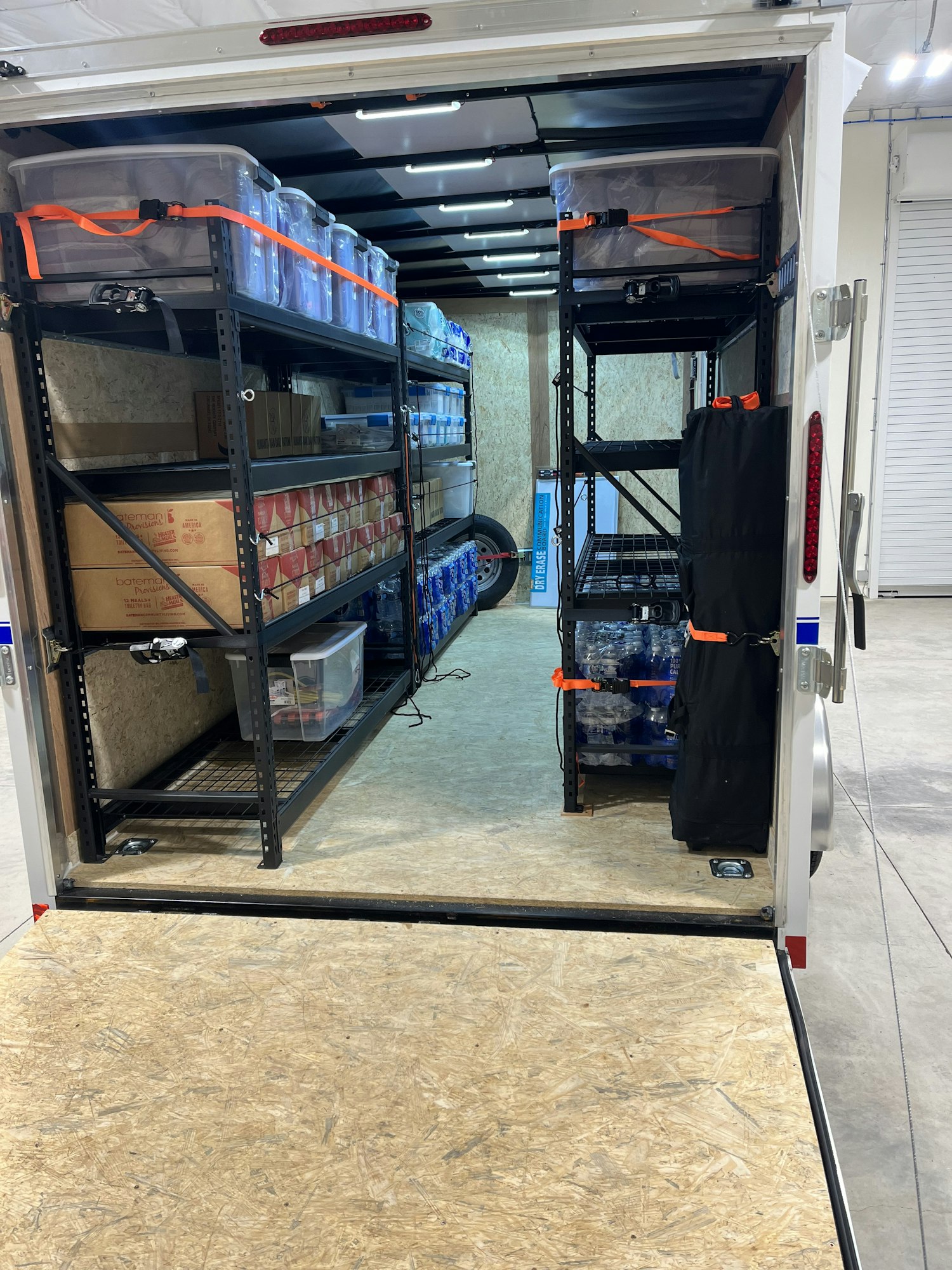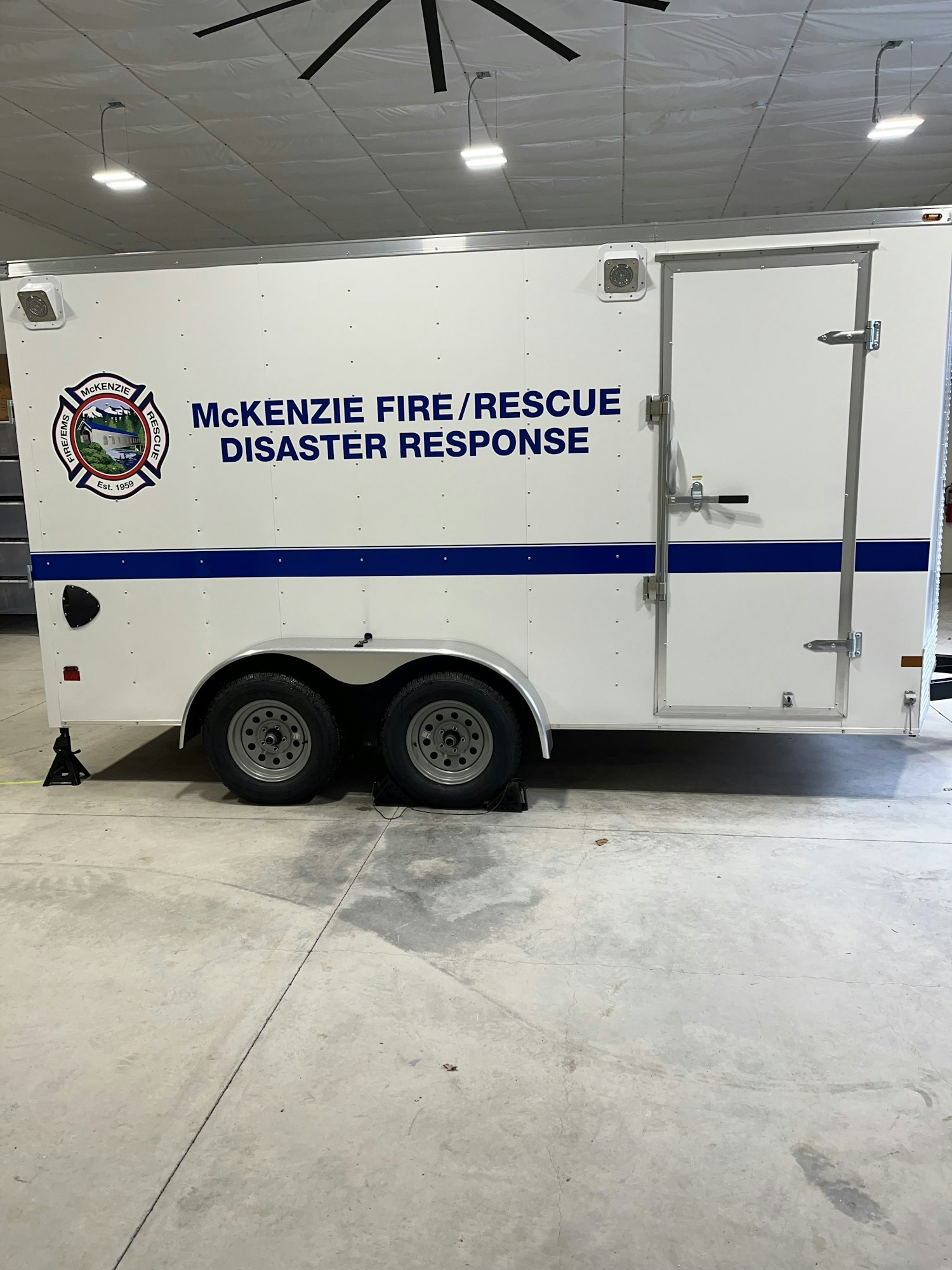Disaster Relief Logistics Center

The McKenzie Fire & Rescue Disaster Relief Logistics Center is now complete. Thank You to all partners who have provided supplies, equipment and funding.
McKenzie Fire & Rescue continues to work with our local partners, non-profits, and other entities to stock the facility with items and equipment that make it a true resiliency hub.
The facility has a backup generator with 1000 gallons of propane storage, heat and AC throughout the entire building, and three bathrooms with showers. The facility houses food, water, hygiene supplies, blankets, infant food/diapers, first aid supplies along with a variety of other emergency supplies.
The facility also has a fully stocked cargo trailer that can be used to transport supplies to other locations during emergencies.


2023:
McKenzie Fire & Rescue received State funding for a Disaster Relief Logistics Center that will serve the McKenzie River area, spanning between Eugene and Bend, during large-scale emergency events. The project includes site development and a new building, providing indoor and outdoor storage and staging areas, and a small ‘EOC’ (meeting room) for operations command.
Project Objectives
- Create a highly flexible facility to serve a variety of potential emergencies and disasters.
- Support the local community by creating a local Disaster Relief and Logistic Center and staging area.
- Develop project prototype for other rural communities in need of a small rural ‘EOC’.
- Pioneer utilizing a design-build construction method for time and cost savings.
Please join us in supporting this endeavor for the McKenzie River Community, serving generations to come.

